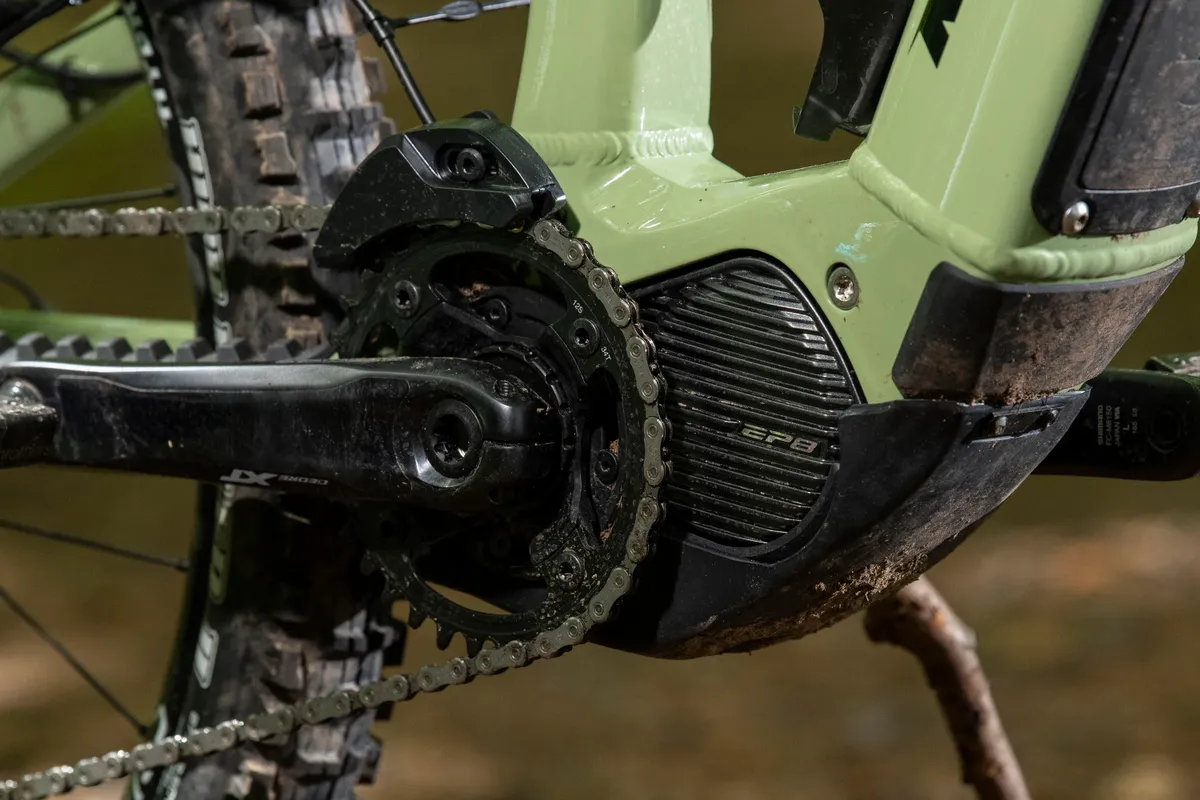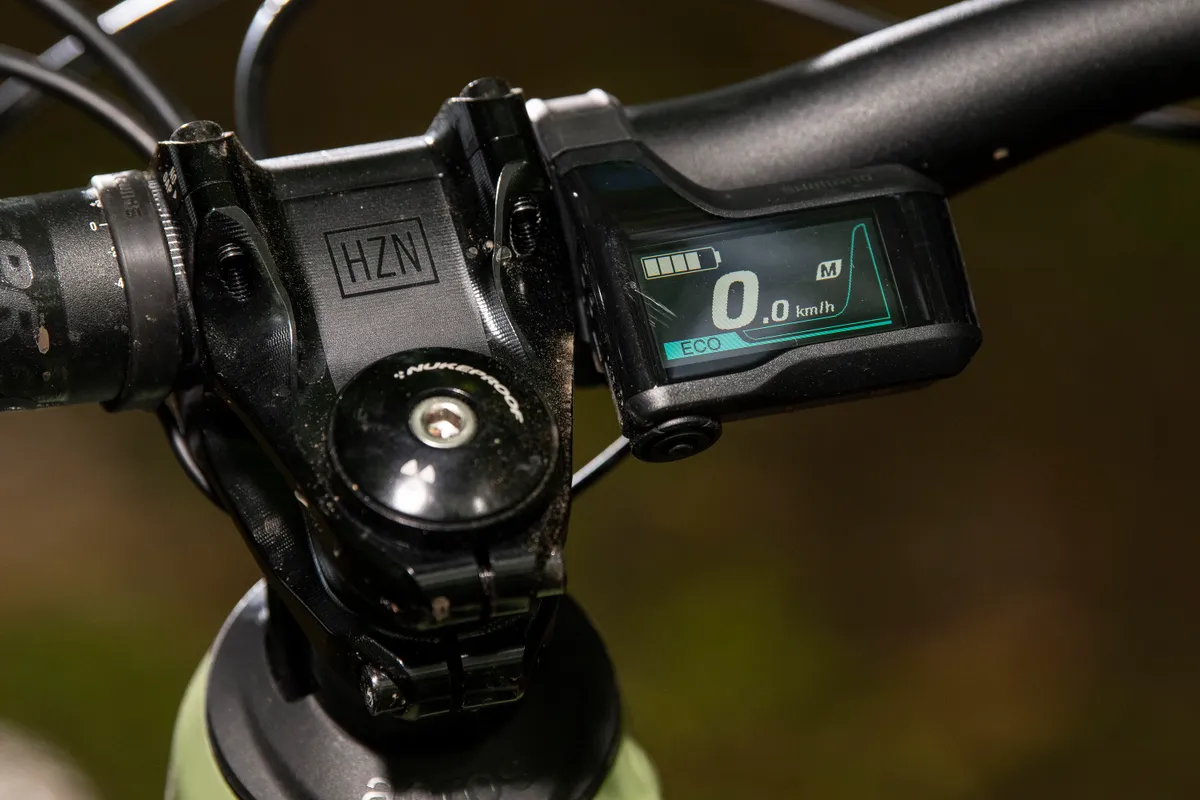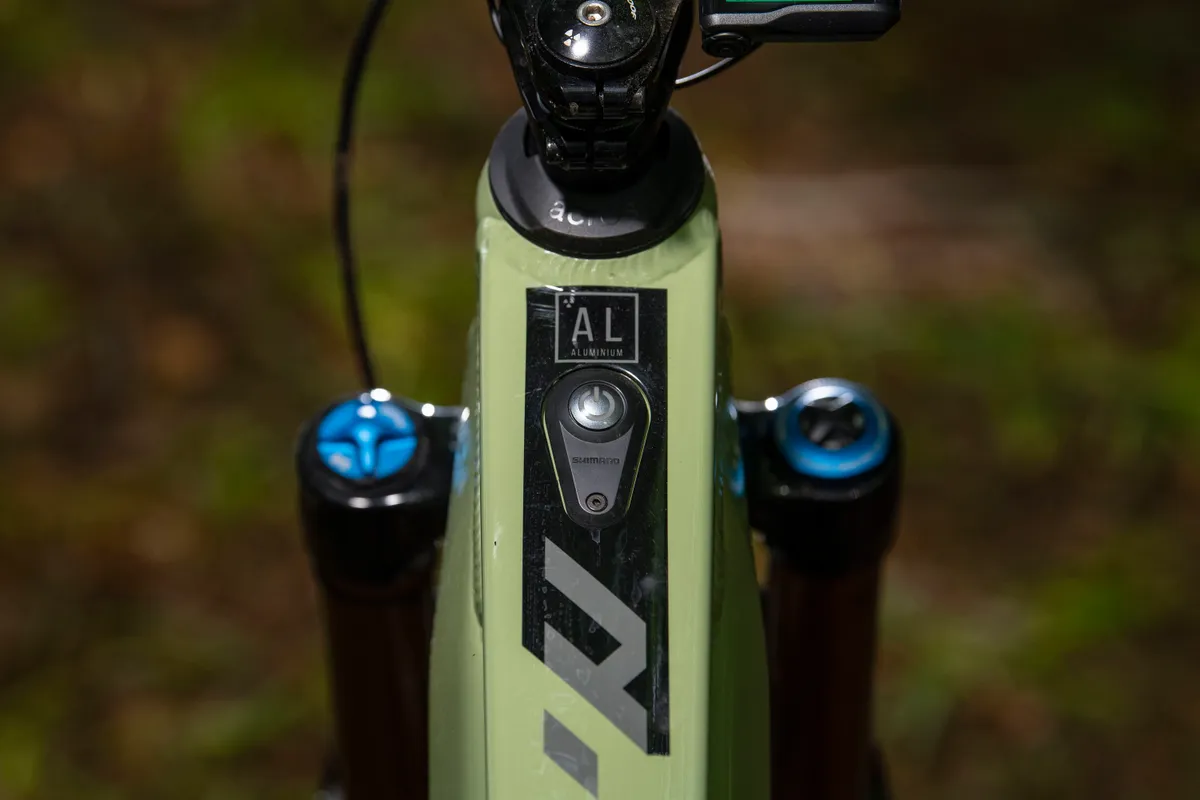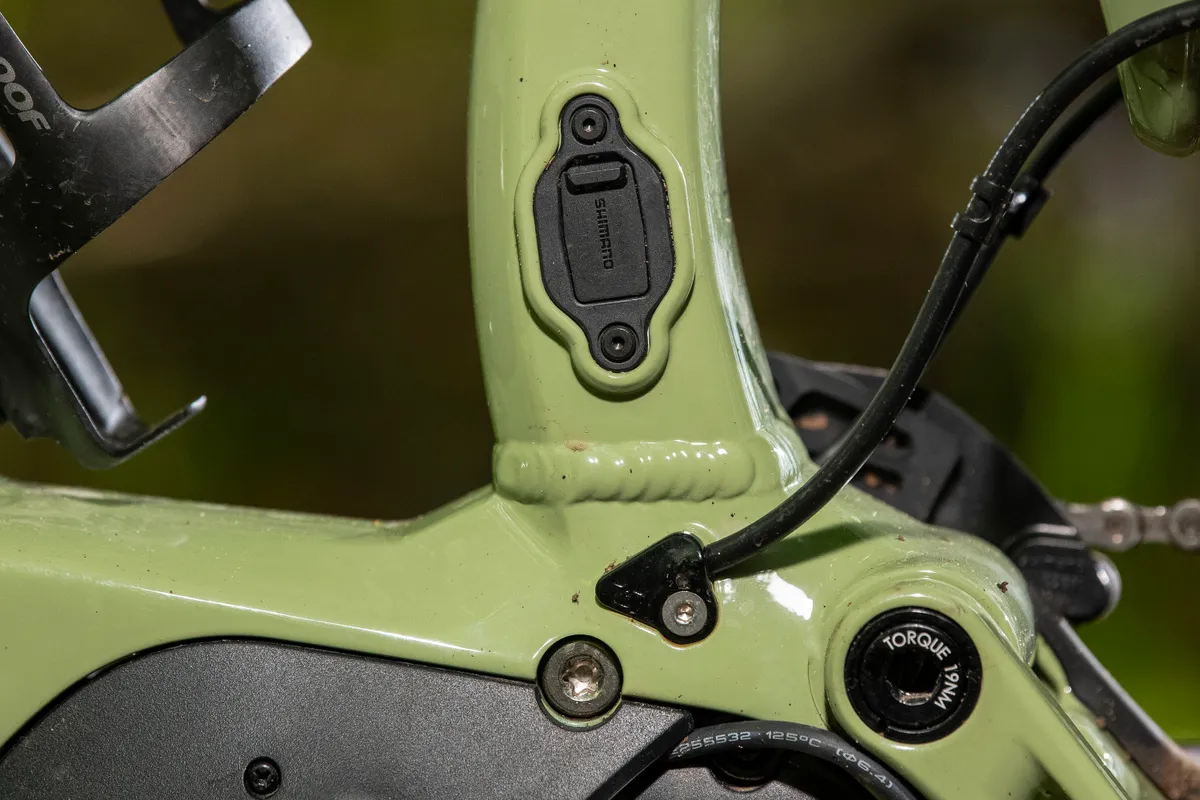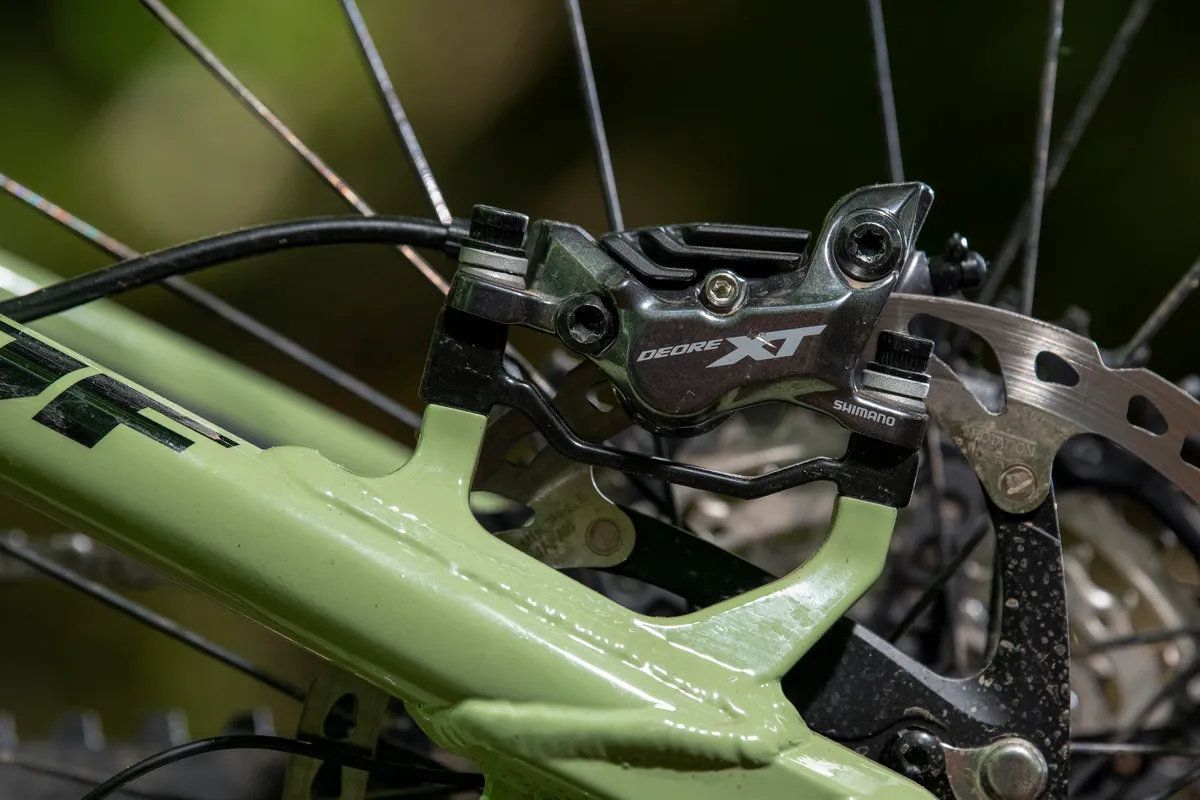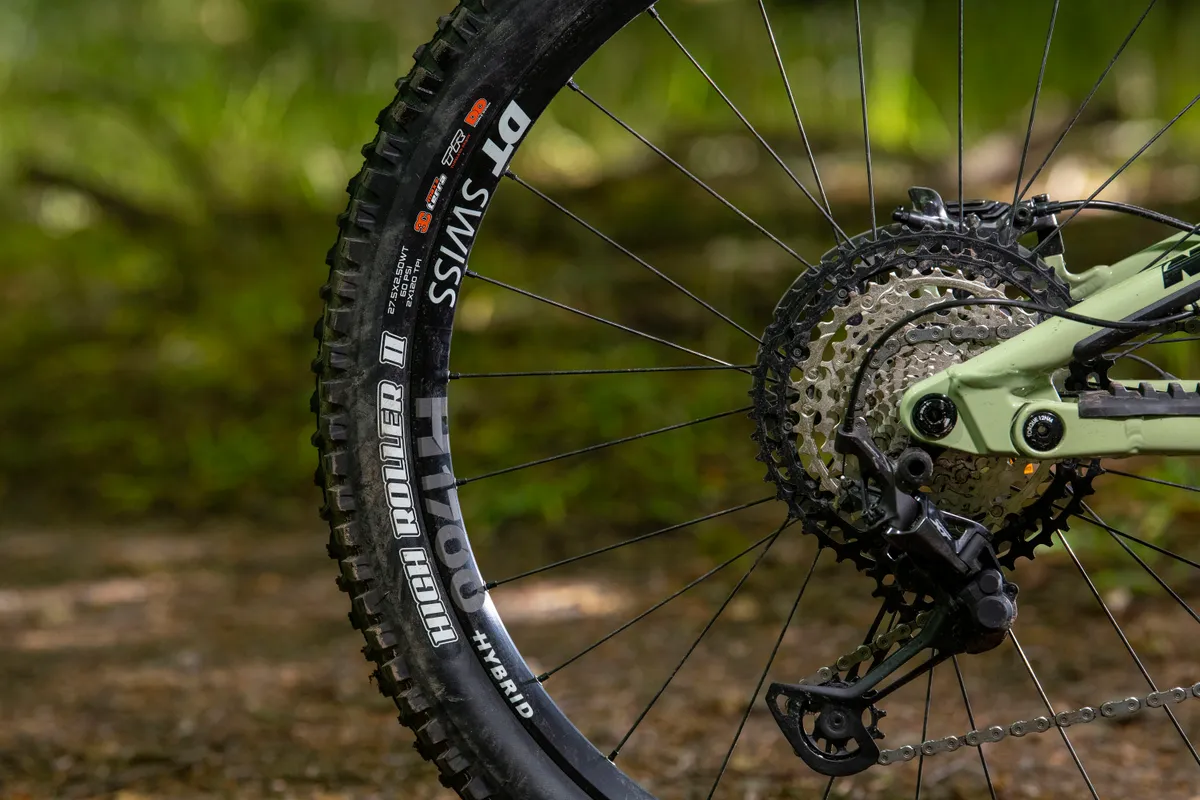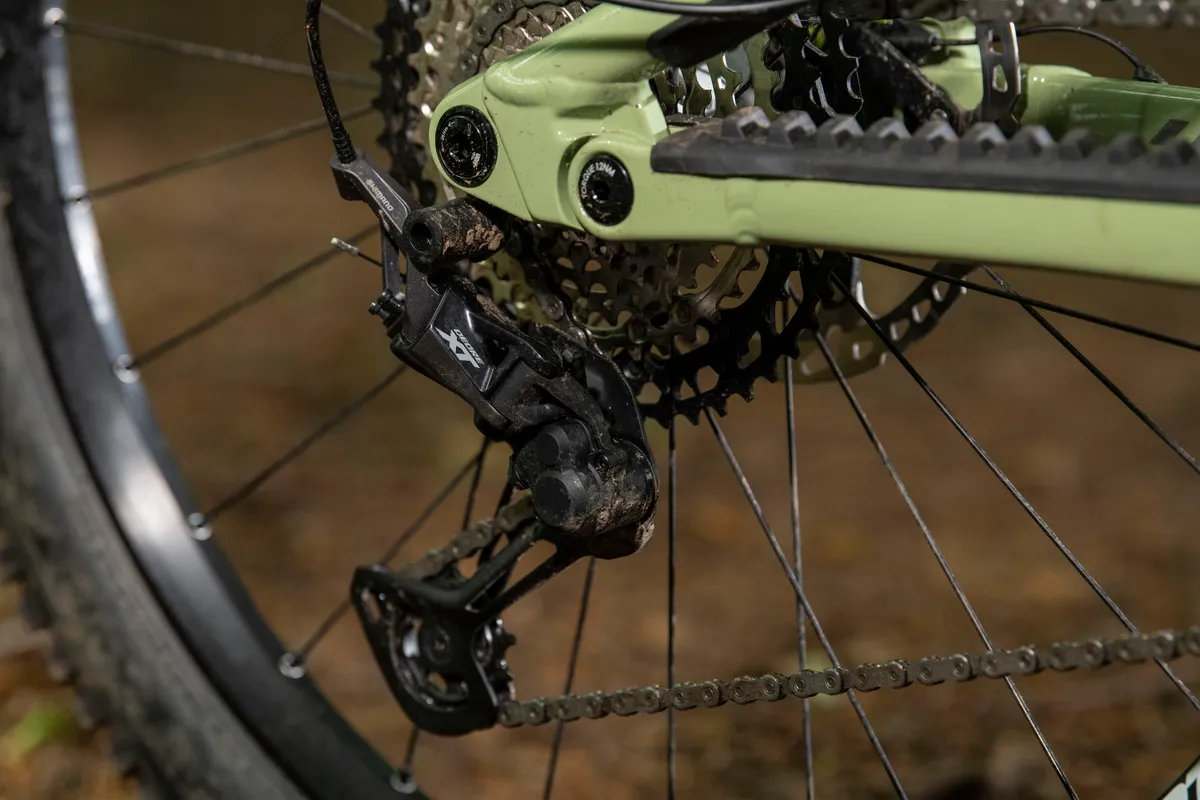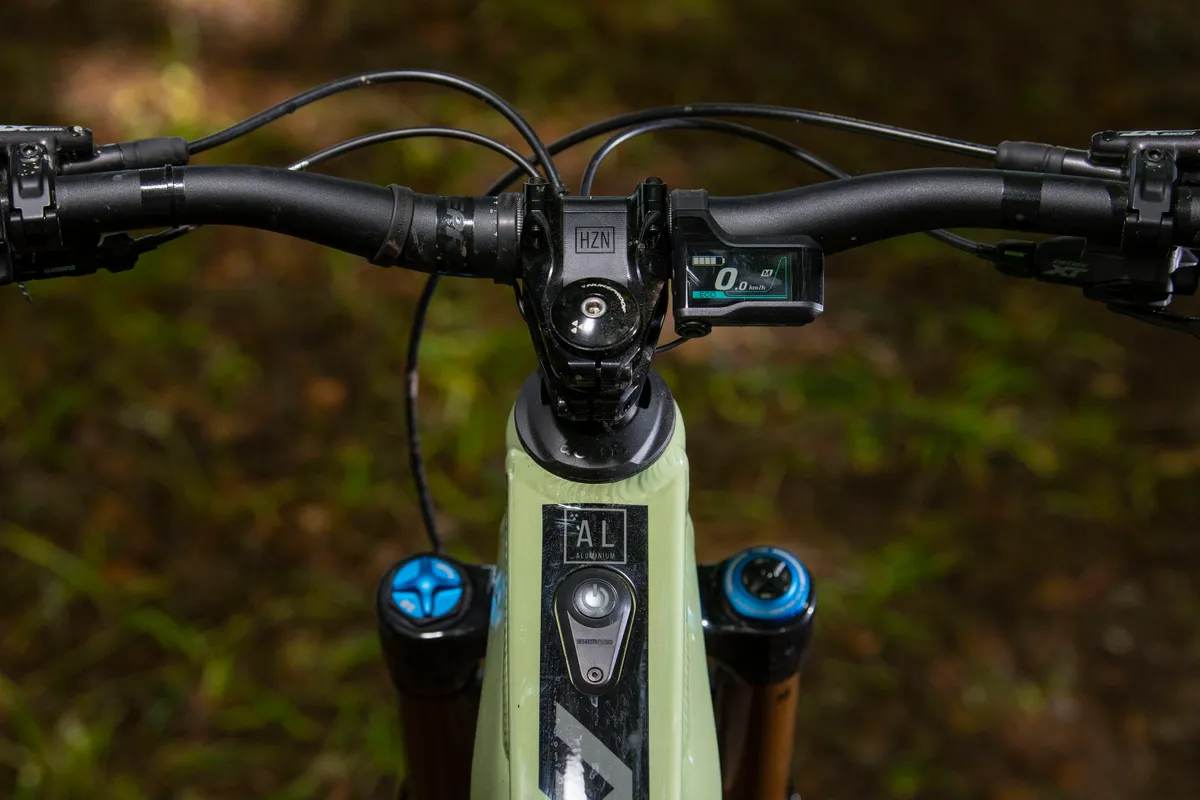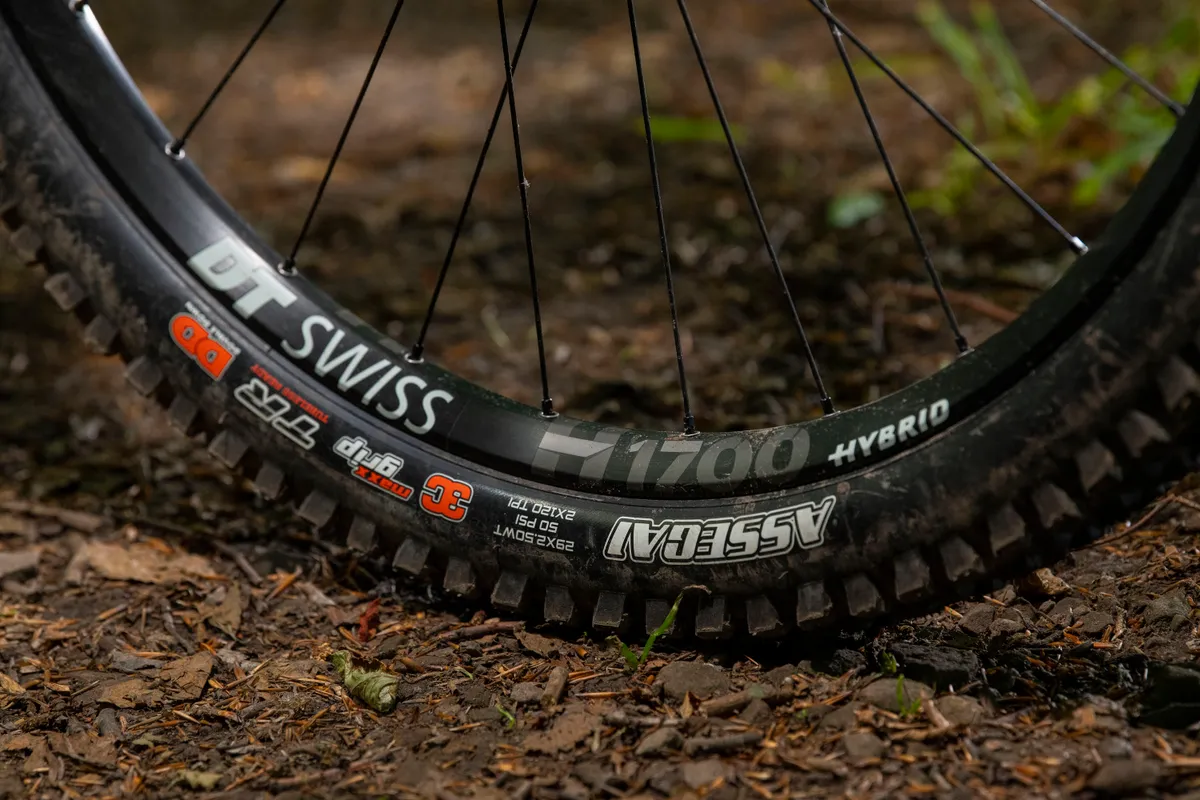Nukeproof has launched the Megawatt, an electrified version of its EWS winning Nukeproof Mega enduro bike.
The Megawatt has a mixed wheelsize Mullet setup, sports 170mm of travel at the front and back, is powered by Shimano's EP8 motor and has an aluminium construction.
Three models will be offered in five sizes, with prices starting at a penny under £5,000, full details of the build specs are listed below.
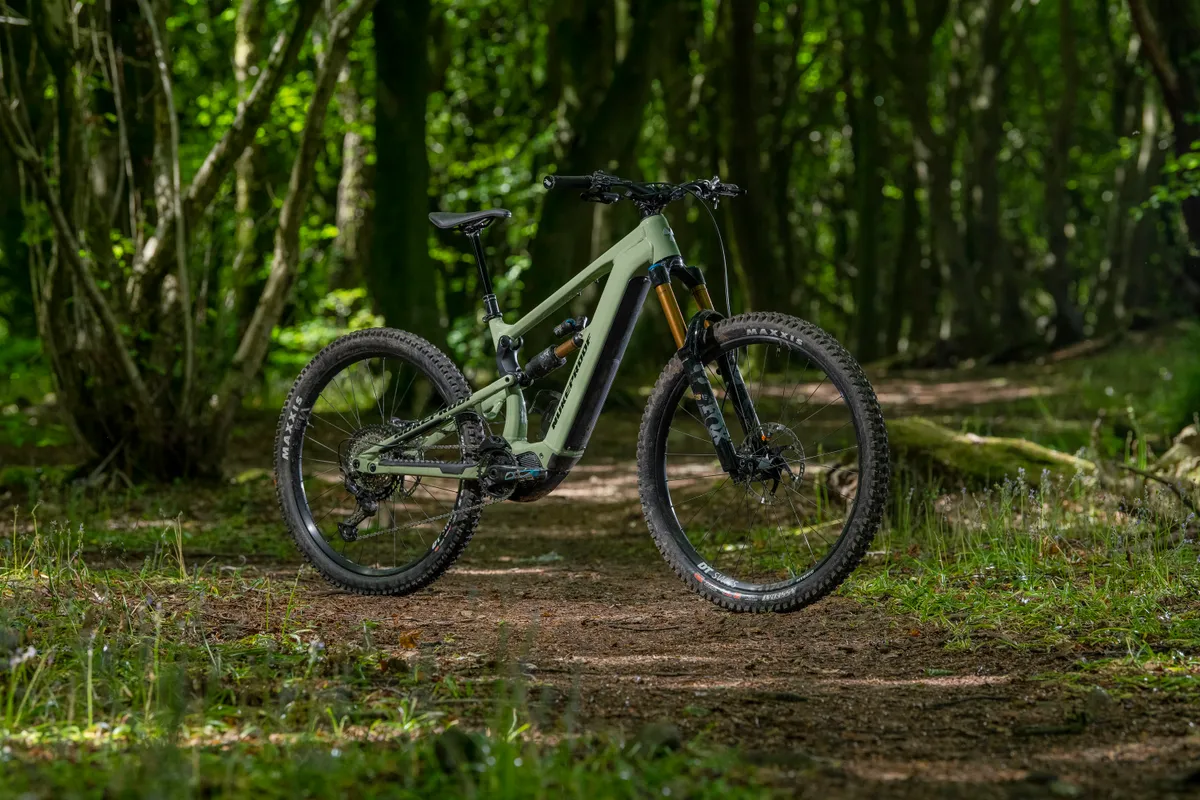
Nukeproof says the bike is good for all-mountain, enduro and DH type riding.
A mega lineage
The original Mega was launched in 2009 and named after the famous Megavalanche race in France – which sees thousands of riders piling down a glacier high in the Alps before tackling some brutally technical singletrack as the race emerges in Alp d'Huez's village in the valley below after often 40 minutes of intense racing.
Over the years, the Mega has amassed plenty of race successes, most notably under Sam Hill, who's won three EWS seasons onboard various iterations of the bike.
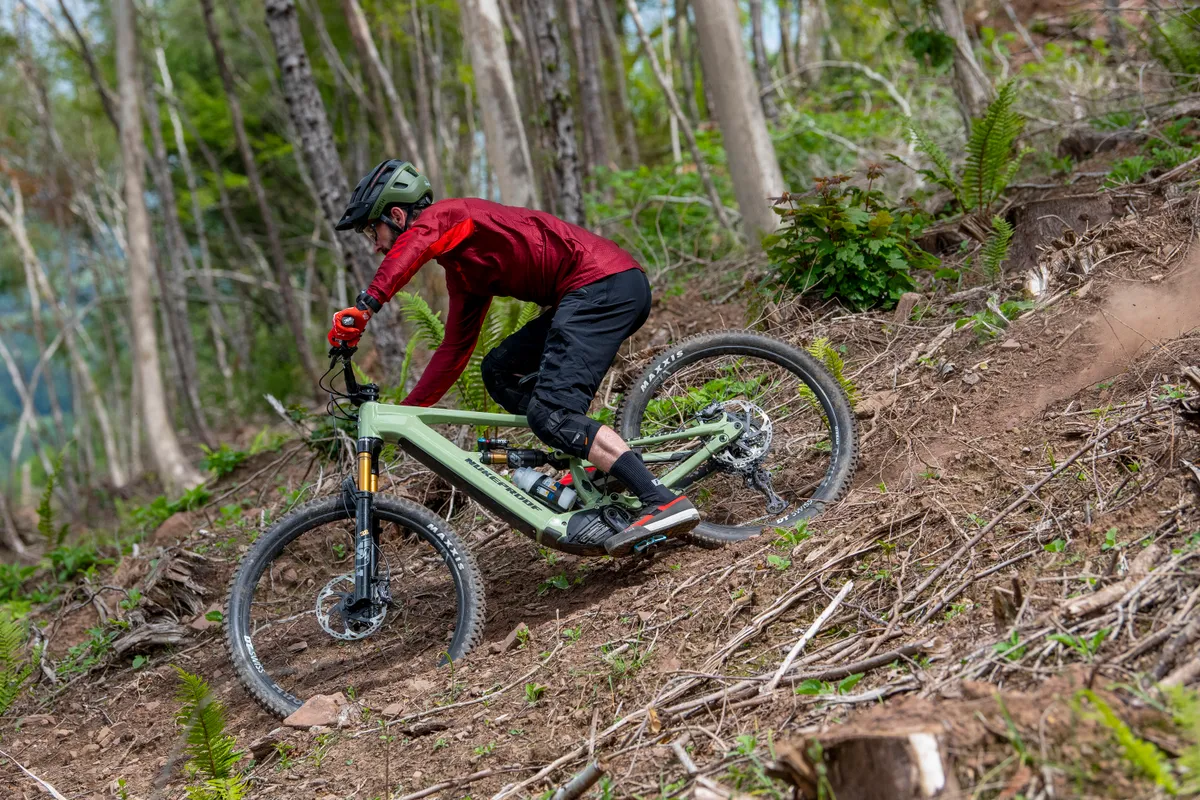
With electric mountain bikes growing in popularity over the past five years, Nukeproof was one of the notably few brands not offering an e-MTB, until now.
True to form, Nukeproof wanted to keep its e-powered Megawatt (see what they did there?) in line with its heritage, and so the form of the bike had to be as close as possible to that of the aluminium, non-assisted Mega – and the non-powered version and Megawatt were designed together.
Nukeproof Megawatt's frame design
In terms of aesthetics, this meant that the frame had to be "clean, simple and functional" with fairly square profile tubes and parallel seatstays and top tubes.
Likewise, the head tube and down tube junction had to be recognisably Nukeproof, as did the shock's swinglink that wraps around the seat tube.
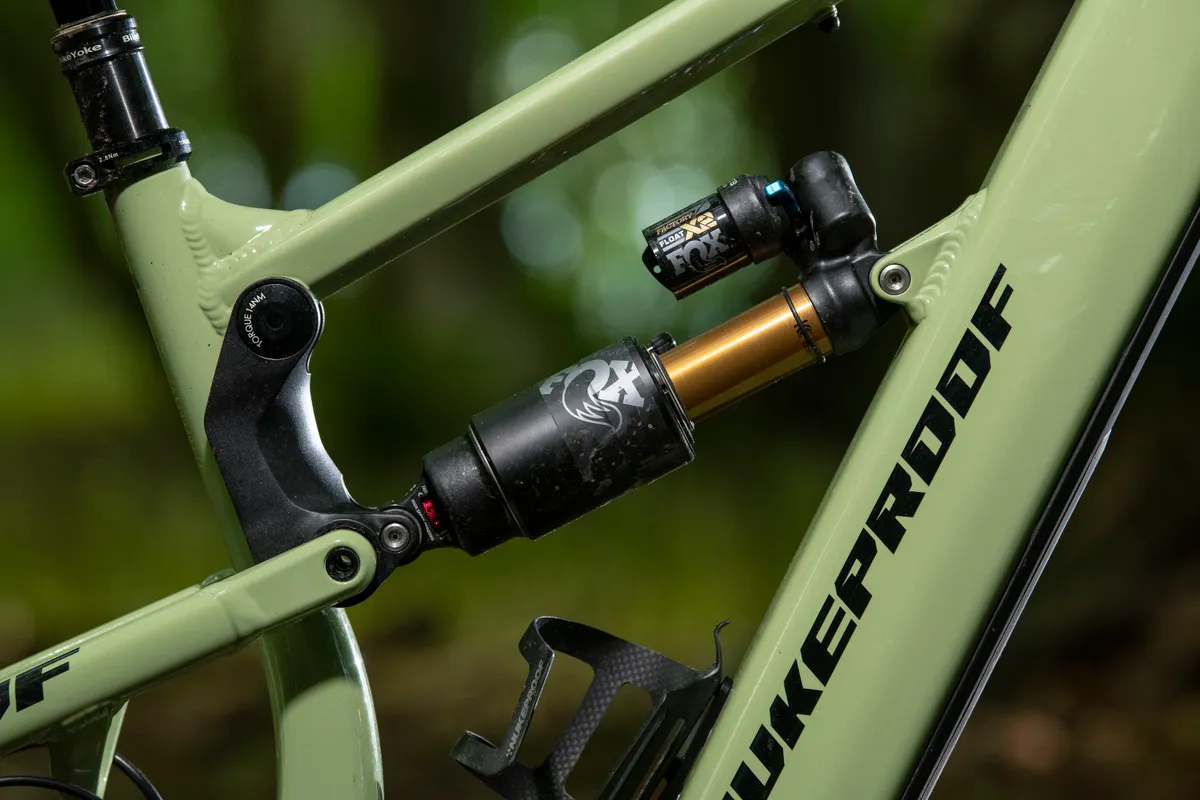
Elements of the V2 Mega can be seen in the rear triangle, though shapes have been modernised via softening some lines and accentuating others, according to Nukeproof.
Other tubes run straight, with minimal curves and bumps, while the ratios of tube lengths and diameters have been considered to make sure the bike works aesthetically and functionally.
Motor and battery integration
Shimano's EP8 is bolted into the belly of the Megawatt, with the battery concealed in the down tube – either the 504Wh or 630Wh will be fitted, depending on the build spec of the bike. It is accessed via a door in the base of the tube.
The battery is held in a one-piece cast motor housing, while the down tube's shape is designed to give the strength and stiffness needed, whilst also allowing for that battery accessibility.
Nukeproof has tuned the power curves of the motor, giving riders two power profiles to chose from: Power and Range.
In the Power profile, the Assist Character, Max Torque and Assist Start settings are all one or two stages higher than those in the Range profile.
This should give it a more aggressive feel under the pedals in all three power modes (Eco, Trail, Boost). As you'd expect, in Range, the bike should feel a little more muted, but battery range is extended.
Nukeproof Megawatt geometry
Five sizes of the Megawatt will be offered, from Small to XXL, so virtually all riders should be able to squeeze onto a bike, especially with its smaller 27.5in rear wheel meaning less squeaky bum time on the steeps for shorter-legged riders.
Nukeproof says there should be a bike to suit riders from 5ft 2in/159cm all the way to 6ft 7in/201cm.
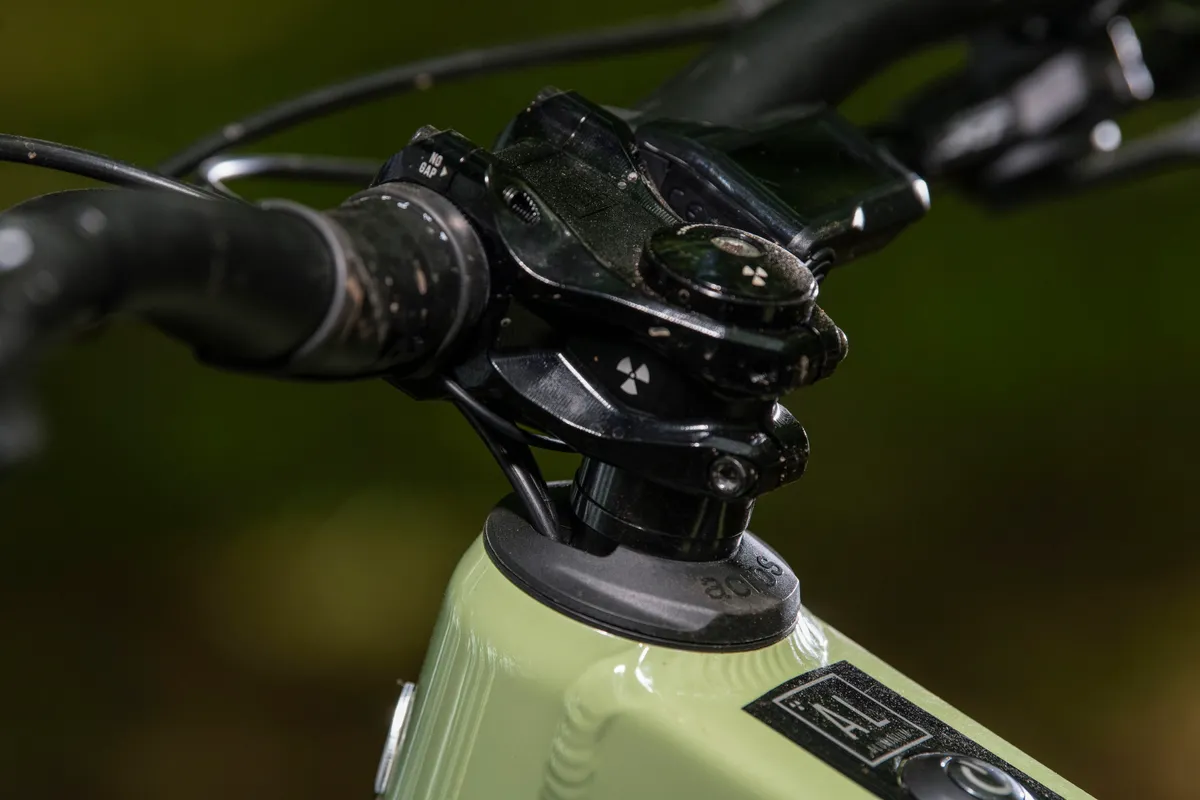
Nukeproof is one of a number of brands that seriously consider the height of the saddle for each bike size, and adjust the geometry to make sure that taller riders don't have their weight too far back. This can be a problem for taller riders because when you raise the saddle, the effective seat angle decreases.
Nukeproof calls this the saddle offset, and it impacts on the real seat tube angle. Vitus's Escarpe and Sommet, as well as e-Sommet, use this approach too.
The Megawatt's geometry is, as you'd expect, very up to date, with a long, low and slack front end. The rear triangle doesn't alter in its sizing between frame sizes, and wheelbases are designed to be very similar to that of the 29er Mega.
The key geometry figures for a Large are:
- Reach: 475mm
- Head angle: 64 degrees
- Seat angle: 78 degrees
- Saddle offset (XS/L/XXL): 139.98mm / 163.32mm / 194.35mm
- Chainstay length: 442mm
- Wheelbase: 1,288mm
- Bottom bracket height: 345mm
Nukeproof Megawatt suspension details
The 170mm of rear wheel travel is provided by a four-bar Horst linkage, with a swinglink driving the shock into the top tube.
The initial axle path is rearward, up until around the sag point, which should help smooth the ride and reduce the amount the wheel hooks up on square edges.
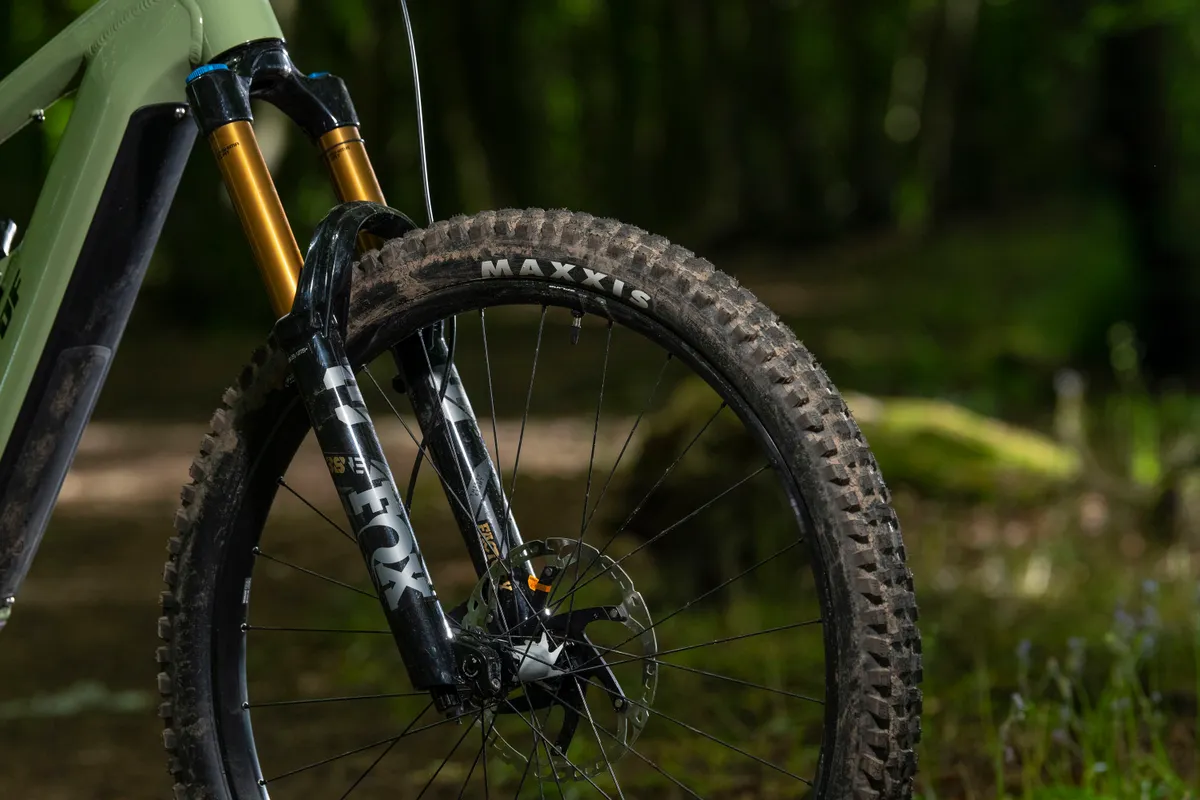
Nukeproof has aimed for a suspension that's supple at the start, to boost grip and comfort, before offering mid-stroke support.
At the end of the travel the kinematic's progressiveness backs off, allowing greater rider adjustment with the air shock's volume spacers.
The projected sag range is 30 to 35 per centre, so riders have a reasonably wide range of tuneability to suit their preferences.
The leverage rate on the shock is said to be very similar to that of the Mega, with a 22 per cent progression through the stroke and an average ratio of 2.6.
In terms of anti-squat, in the lower gears it's higher but still sits lower than a non-powered Mega because the motor should make up for that loss of pedal efficiency. This is done to increase suppleness and grip when climbing.
In higher gears, the anti-squat is fairly low, to reduce the impact of bumps on the cranks – basically reducing pedal kickback – for a smoother ride.
Likewise, when it comes to anti-rise, there's some squat under normal braking loads when the suspension is around the mid-travel point, to help the rear tyre dig in, but this tails off on the biggest hits, allowing the rear end to work as it should in all conditions.
Nukeproof Megawatt frame details
The Megawatt has a number of nice finishing touches.
These include SRAM's Universal Derailleur Hanger, room for a 500ml bottle (or 620ml with an adaptor), rubber frame protection boosted by a hard plastic fairing for the motor, a gear accessory mount and a collet style main pivot axle, which Nukeproof says improves frame stiffness.
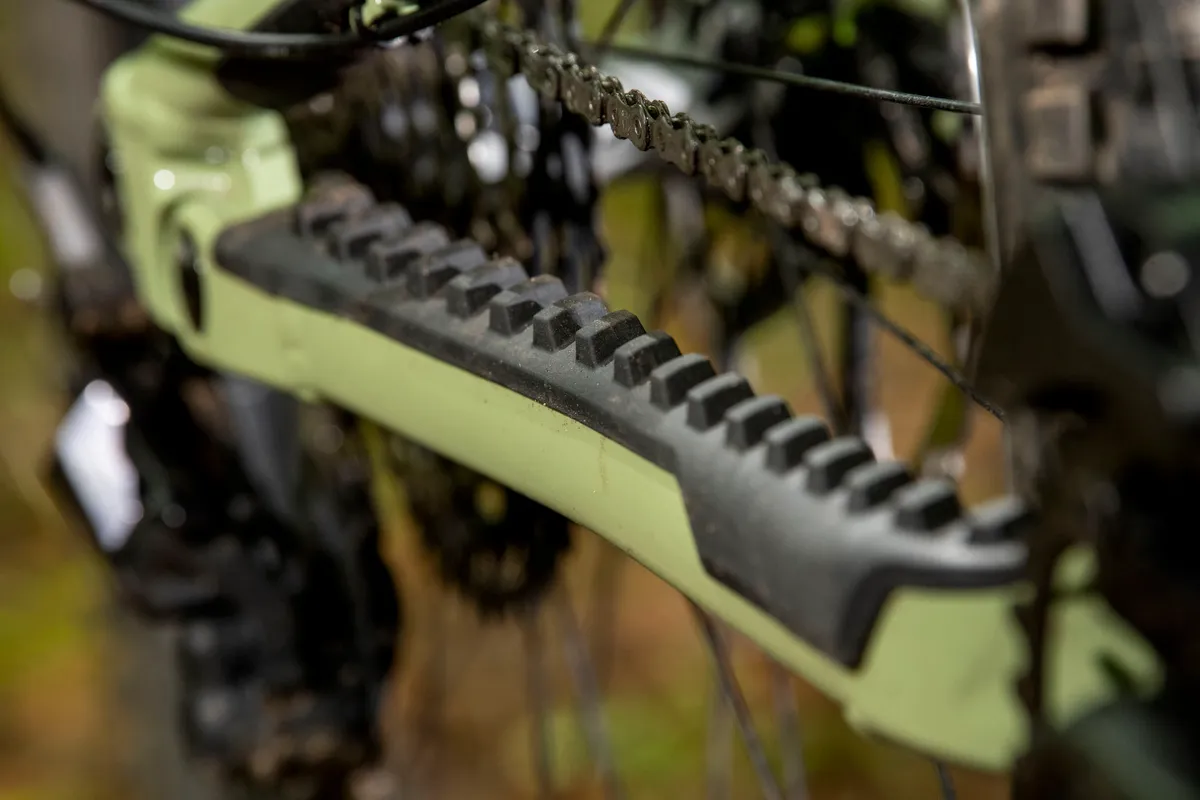
Cable routing is mostly internal, while the seat tube has been designed to allow for the maximum seatpost insertion. There's tyre clearance for up to 2.6in tyres.
Nukeproof Megawatt specifications and prices
The Nukeproof Megawatt is available in three spec options, with the Comp and Elite heading to stores on the 2 July, and the Factory bikes landing later in the month.
Nukeproof Megawatt Comp Alloy
- Battery: Shimano EP8 with 504Wh
- Fork: RockShox Zeb Select 170mm
- Shock: RockShox Super Deluxe Select
- Drivetrain: Shimano Deore
- Brakes: Shimano Deore
- Wheels: Sun-Ringle Duroc
- Tyres: Maxxis Assegai 2.5in WT 3C MaxxGrip DD (f) Maxxis High Roller II 2.5in WT 3C MaxxTerra DD (r)
- Finishing kit: Nukeproof
- Price: £5,000 / $5,500 / €6,000
Nukeproof Megawatt Elite Alloy spec
- Battery: Shimano EP8 with 630Wh
- Fork: Fox 38 Performance Elite 170mm
- Shock: Fox X2 Performance
- Drivetrain: Shimano SLX
- Brakes: Shimano SLX
- Wheels: DT Swiss H1900 Spline
- Tyres: Maxxis Assegai 2.5in WT 3C MaxxGrip DD (f) Maxxis High Roller II 2.5in WT 3C MaxxTerra DD (r)
- Finishing kit: Nukeproof
- Price: £6,000 / $6,600 / €7,200
Nukeproof Megawatt Factory Alloy spec
- Battery: Shimano EP8 with 630Wh
- Fork: Fox 38 Factory 170mm
- Shock: Fox X2 Factory
- Drivetrain: Shimano XT
- Brakes: Shimano XT
- Wheels: DT Swiss H1700 Spline
- Tyres: Maxxis Assegai 2.5in WT 3C MaxxGrip DD (f) Maxxis High Roller II 2.5in WT 3C MaxxTerra DD (r)
- Finishing kit: Nukeproof
- Price: £7,000 / $7,500 / €8,200
